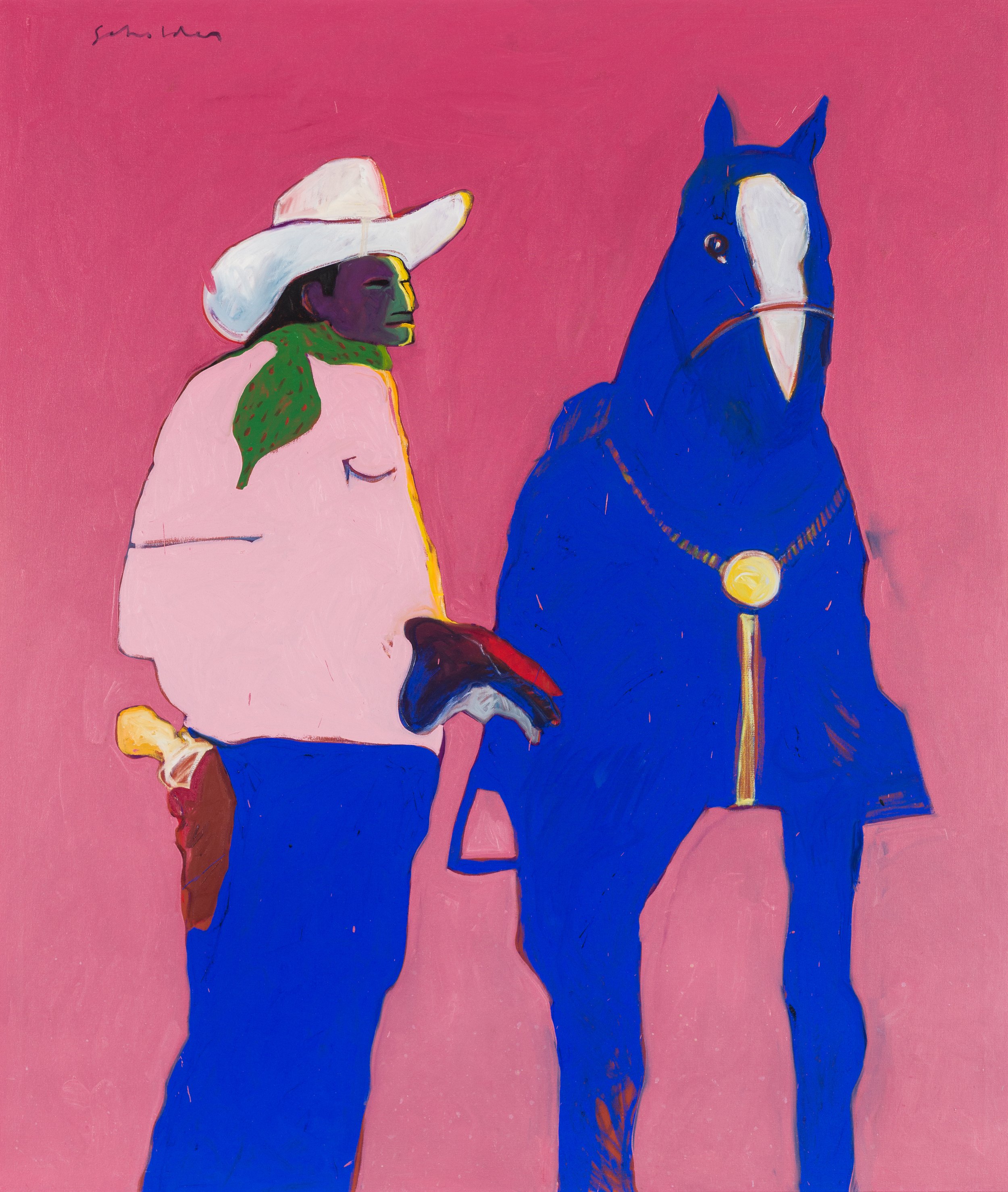Fritz Scholder (LUISEÑO, 1937-2005)
In the memories of most non-Natives who comprise the Baby Boomer generation, the television waves of the 1950s and 60s were filled with series entertainment based on the Wild Western horse and holster cowboy dramas. Hollywood’s Wild West was identified by cattle drives, covered wagons, gamblers, drovers, bounty hunters, and gentleman ranchers and generally had no role for Natives beyond that of breech-cloth wearing men on horseback circling the wagons and shooting flaming arrows at terrified settlers. Non-existent in the Hollywood fantasy was the reality of the West’s population: Indians, Mexicans, and Blacks were usually marginalized or excluded altogether. Scholder’s Indian Cowboy and Horse is one example of how his work effectively created a new manner of representation of the Indian figure and ushered in a timely change in who controlled the subject and how. For Native art history, painting came of age with the changing social environment of Scholder’s milieu, and with a freedom not seen before his confrontation of pop culture’s persistent Indian stereotypes.
Fritz Scholder’s early career aimed to negate the Studio Style of artwork fostered and taught by Anglo educators to Indian students in boarding schools, which he deemed decorative, flat, and far from the reality of modern Indian life. The artist’s subsequent years produced numerous examples of paintings in which Indians were not only the central interest, but interpreted in colors and style more conducive to the abstract expressionist movement, pop art, and postmodernism. Indian Cowboy and Horse features a familiar compositional structure repeatedly utilized by the artist. With few details, the majority of the painting features large areas of color block emphasized in the pink shirt against a vivid red-pink ombre background and a blue horse and saddle stirrups in frontal position adjacent to the blue pants of the cowboy. Minimally worked areas include the white used to delineate the cowboy’s hat, catch the highlight of the horse’s eye, and trace the full blaze of its face. A green scarf with reddish spots breaks the area between the cowboy’s shadowed face and his upper chest. Small areas of yellow complete the highlights on the face, shirt, pistol handle, and medallion of the horse’s breast collar. The two figures are joined at the midsection with a gloved hand. Scholder’s restrained palette and bold selection of color electrifies the large, flat canvas surface. The absence of any background detail forces attention on the two figures, man and horse; the Native subject commands all interest leaving the viewer to regard only what Scholder has presented before them.
Devoid of the familiar regalia, feathers, and settings one expects to see surrounding the subject, the Indian is as the Indian artist sees him. In contrast to the lampooning depiction of Wild Western film Indians, Scholder strips back his presentation to the basics: figure, form, color, and space. Neither sentimentality nor noble savagery distract from the cowboy. That the subject is Indian at all relies on the most minimal of facial features, a half profile with sun-darkened skin and the painting’s title. Famously, Scholder once stated, “I am a non-Indian Indian.” Does his qualification negate how directly he instigated and changed the production of art by those of Indian ancestry? The enigma of Fritz Scholder continues.
Image courtesy Larsen Gallery.
